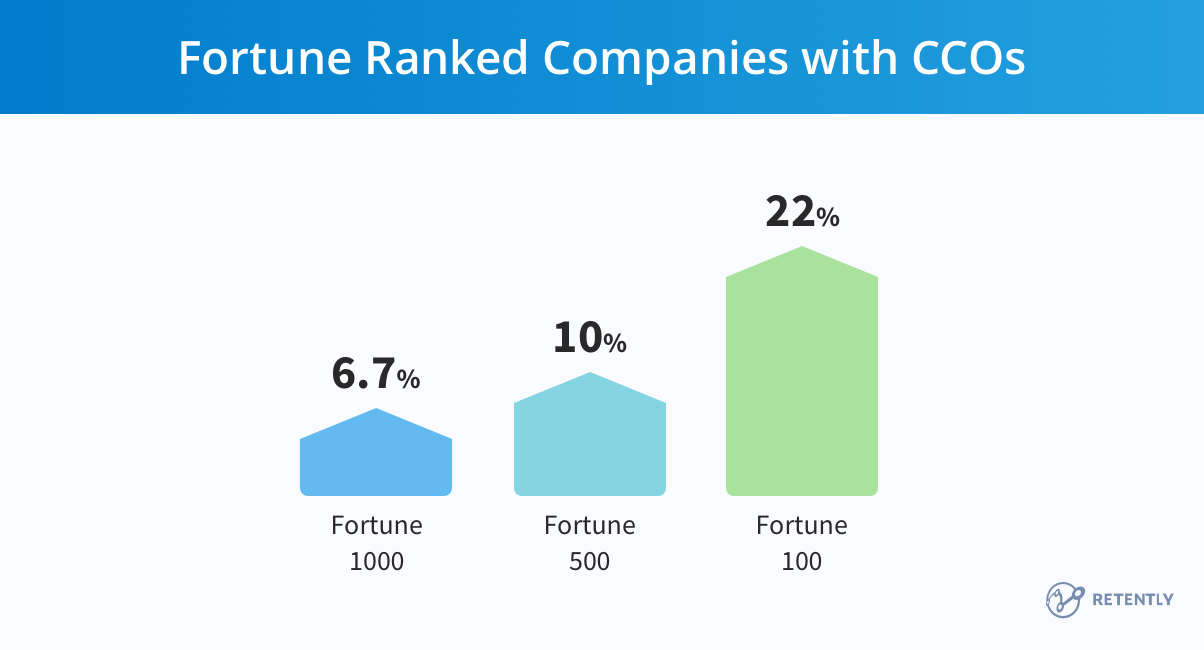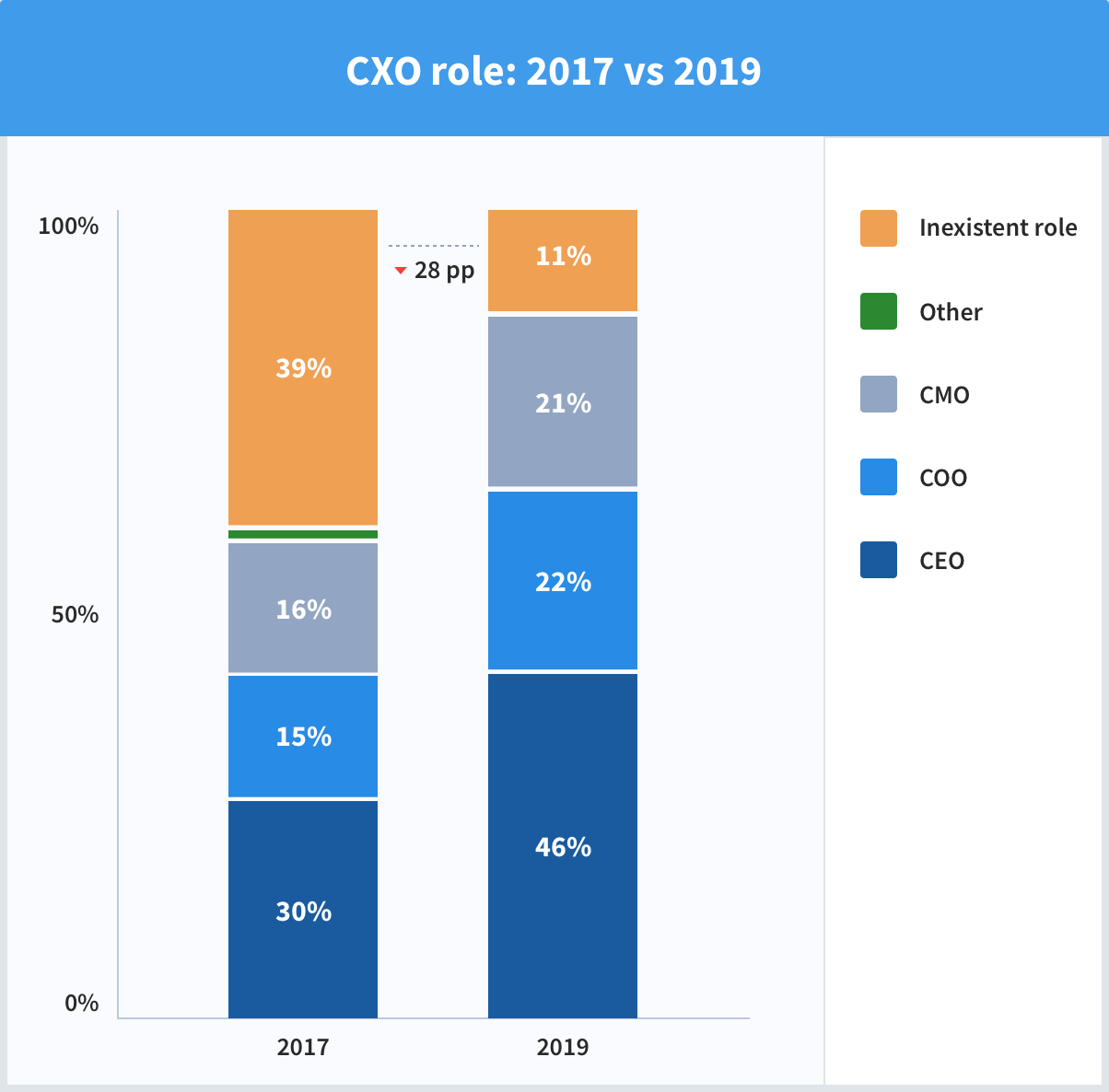How do you approach customer happiness in your company? Do you simply rely on the generic “the customer is always right” speech, or do you have a customer-centric culture in place that’s overseen by a professional who understands how customers think and feel, and who knows how to get that point of view across to other employees too?
The second approach definitely sounds more complex, expensive and demanding in terms of effort. But taking customer experience lightly can be dangerous too. Some studies suggest that poor customer service costs businesses up to $62 million per year. Others are less “optimistic,” saying that companies stand to lose up to $1.6 trillion annually when their customers leave – and that’s only in the US. If we were to consider businesses in other countries, the numbers would probably be even worse.
Whichever way you look at it, it’s clear that unhappy customers (who are much more likely to leave your brand, naturally) are a huge threat to business growth.
The obvious solution is offering your customers a much better experience, service, and product to ensure they are happy with your business. However, making sure customer experience is handled the right way throughout your entire organization can be tricky – especially if you have a large company with multiple departments and branches.
Miscommunications, low employee engagement, and the lack of a customer-centric company culture can also get in the way and make things worse.
Overall, it seems like the easiest way to solve that is to have someone specialized in customer experience in charge of the whole process – to both make sure everything is going as it should and that the majority of the C-level can focus on other matters.
Well, that’s where the Chief Experience Officer comes into play.
What Is a CXO?
CXO stands for Chief Experience Officer. People might also refer to this position as Chief Customer Officer, Chief Customer Experience Officer, Chief Client Officer, or Chief Customer Service Officer. While the specific title may vary, the core responsibility remains the same. The CXO is an executive-level position, albeit a relatively new addition to the C suite – ever since, the CXO position has started getting more and more recognition.
A short definition of the CXO position describes it as being responsible for managing the business relationship with its customers throughout the entire customer experience journey. It involves ensuring a seamless experience at every touchpoint, aligning various departments to deliver exceptional customer service, and implementing customer-focused strategies to improve satisfaction. The CXO’s influence reaches across call centers, marketing, sales, billing, customer support, and other areas where a customer-centric approach is necessary. Their role is to champion the customer’s perspective and advocate for their needs within the company.
How Did the CXO Position Come to Be?
A generic response would be that the CXO position got its start the moment major companies began wondering whether or not they should have a supervisor responsible for the overall customer experience. Yet, the term Chief Experience Officer is relatively recent compared to a similar role – the Chief Customer Officer (CCO).
If we are to look at the available research, we’d see that – back in 2004 – Forrester Research did a report that showcased how important a more centralized approach to the customer experience is. According to it, only 24% of the surveyed companies had a person in charge of the customer experience within their organization.
It was only in 2008 that the Chief Customer Officer position started being recognized as an important role within a company. According to a 2009 survey, over 2/3rds of marketing professionals admitted companies needed a CCO. What’s more, over half of the companies where the survey respondents worked already had a Chief Customer Officer.
Over the years, the CCO position received more and more recognition. According to the CCO study performed by the Chief Customer Officer Council, 22% of the Fortune 100 companies had a C-level Customer Officer. In the study, 10% of the Fortune 500 companies and 6.7% of the Fortune 1000 companies reported the same thing.

The CXO position can be considered as a development of the CCO role, taking a broader perspective. The exact timing of the first mentions of the Customer Experience Officer may vary across sources, but it gained prominence in the 2010s, given the growing importance of customer experience as a strategic differentiator.
By 2019, according to Gartner’s CXM Survey, only 11% of companies lacked a CXO and 10% a CCO – a 24% increase compared to 2017. This data reflects a growing recognition of the importance of CX leadership in driving business success and delivering exceptional customer experiences.

Despite all that progress, there are still plenty of debates regarding whether the CXO position is a good addition to the C suite since some points of view argue that an extra C-level position isn’t necessary to handle the customer experience.
Well, we’ll first look into what a CXO actually does for a company and then discuss whether a Chief Experience Officer is a good addition to the C-level.
What Does a CXO Do?
According to the general Chief Experience Officer job description, these are the main roles associated with a CXO position:
1. Motivates the Frontline Employees
When employees are happy and motivated, customers are satisfied. This is why the Chief Experience Officer is responsible for interacting with frontline employees (like call center operatives and field technicians).
For example, the Chief Experience Officer can hold town hall meetings (an event where employees can ask C suite officers various questions and engage with them), visit company call centers to interact with frontline employees and show them their perspective on the customer experience matters, write articles addressing employees on the company’s blogs or draft the company newsletter.
Besides motivating frontline employees, though, a CXO is also responsible for having a system in place (like eNPS) to acquire feedback from them regarding how happy they are working at the respective company. The goal is to address any issues causing employee dissatisfaction in order to increase productivity rates..
A Customer Experience Officer could also gather customer feedback from frontline employees and share it with other departments or C-level officers. Besides offering great customer insight, this also motivates said employees by showing them management takes their work seriously and considers it valuable for business growth.
2. Uses Valuable Client Data to Build a Master View of the Customer Profile
With all the customer-centric data we have available nowadays, it can be easy to lose track of some of it. The Chief Experience Officer is supposed to find a way to centralize all the customer data in a company so that all the relevant departments have a 360-degree view of their customers’ needs and pain points.
This way, it becomes much easier to optimize the customer journey and measure satisfaction levels across all touchpoints – something that, according to research, is around 30% more predictive of consumer satisfaction than just focusing on individual customer interactions.
What’s more, the CXO is also supposed to use all that data to highlight recurring customer issues and complaints, so that your support and product development teams can solve them before they even occur – or at least before they manage to upset too many customers.
3. Defines and Implements CX Measurement and Reporting Standards
If you’re unfamiliar with CX metrics, here’s a guide explaining everything you need to know. If you’re looking for a short version, CX (customer experience) metrics are a way to keep track of how satisfied customers are with your business and services, how easy it is for them to interact with your brand, and how likely clients are to promote your products/services to others – just to name a few examples. The most well-known and trusted CX metrics are NPS, CSAT, and CES.
Overall, CX metrics are a valuable asset for any business – they offer valuable insight into what customers want and how you can make them happy. Well, the Chief Customer Officer is actually responsible for defining and implementing appropriate CX metric measurements and reporting standards throughout the entire company. That means the CXO will be handling (or at the very least overseeing) things like:
- Deciding which CX metric is the most relevant at a given time and which collection methods should be used
- CX survey questions
- CX survey triggers
- Distributing survey results across departments
Moreover, the CXO will also implement onboarding and refresher CX survey training – both for frontline employees and C-suite officers.
4. Fosters a Company-Wide Customer-Centric Culture
To make the customer feel valuable to the brand, the Chief Experience Officer unifies the way all employees view consumers. And to make sure the company lives and breathes a customer-centric approach round the clock, someone at the C level should handle it. It sets a better example for the frontline employees and drives change from inside the company.
One thing a CXO would do to instill such a customer-centric mindset is to encourage the product development team to collect relevant feedback from the existing customer base and share it with C-suite officers. Based on that information, product-related decisions can be made and approved quickly, ensuring the product development team anticipates customer expectations and over-delivers.
The Chief Experience Officer can also interact with the marketing department, and push customer success stories through their channels, thus showing consumers how appreciated they are, and emphasizing to the marketing team why focusing on such stories matters.
Those are just some examples; one can try out many other ideas. But the main highlight worth noting is this – since the CXO is what bridges the gap between what C-suite officers want and what happens operationally at the frontline parts of the company, it’s easier to instill a customer-centric approach both at frontline and management levels and make sure everyone is in agreement.
5. The CXO Brings Customers Into the Creative Process
A Chief Experience Officer can help foster a “customer perspective approach” in the product development process within a company. They could work on, supervise, or be responsible for finding ways to involve existing customers in product development or even customer support and education.
Some examples of that would include having loyal customers test out prototype products/services and asking them to offer feedback and suggestions, or building up an online community where customers are encouraged to interact and help each other (think of an online forum where users receive recognition for offering helpful answers and tutorials).
So, Will a Chief Experience Officer Benefit Your Business?
Yes, we believe that having a CXO position filled at the C level in your company can work to your brand’s advantage. While some business owners and directors have second thoughts due to perceiving the Chief Customer/Experience Officer salary as being a considerable cost for the company (somewhere around $173,000/year and an average of 204,000/year for the CXO position) – which is completely understandable – our research shows that a CXO’s involvement in a company makes up for those costs (provided the right person is assigned to the CXO position, of course).
Now, let’s get down to the advantages. First of all, if a CXO does the job properly and addresses employee motivation correctly, that directly impacts company growth in a positive way. According to multiple studies, employee happiness can boost sales, stock prices and productivity.
Furthermore, if a CXO successfully sets up a feedback collection system in place, and your brand acts on it, that will show customers just how much you value their opinions and input. Not enough businesses pay attention to that fact, and that it’s the kind of thing (no matter how small) that can change the way consumers view your brand.
Also, if a Chief Experience Officer’s efforts lead to better product development and customer support to the point where customer expectations are exceeded and pain points are anticipated, your company stands to make a decent profit on that. Why? Because according to research, 8 in 10 consumers are willing to pay more for a better service. Also, avoiding bad customer experiences will save you time, money, and hassle since it takes around 12 positive experiences to make up for a negative one.
And a CXO is actually in the position to directly enact change – unlike someone in the HR, marketing, sales, or support department who lacks the authority and needs supervision and approval. Furthermore, a CXO has the experience and skills to evaluate customer needs and complaints required to make a correct decision – that’s their area of expertise, after all. So, customer-related decisions no longer have to be monitored and approved by other C-suite officers who might not be familiar with the customer experience mindset.
All in all, the Chief Experience Officer deserves his/her spot among the C-suite officers – at least in our opinion. Customer experience will only become more and more important in the future, and having an expert in that niche overseeing the customer experience process will become mandatory – not just beneficial.






























 Christina Sol
Christina Sol 

 Alex Bitca
Alex Bitca 
 Greg Raileanu
Greg Raileanu 

